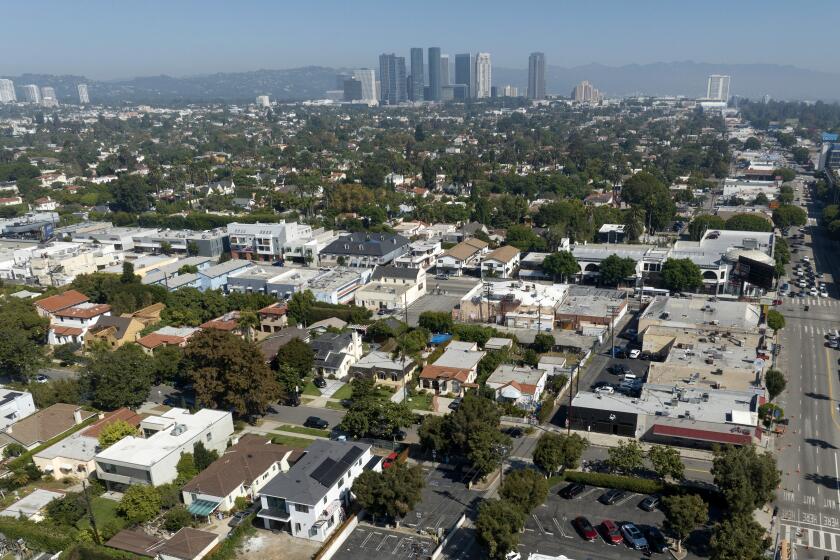Los Angeles rezoning plan won’t spur enough new housing, report finds

- Share via
A soon-to-be-voted-on plan to rezone the city of Los Angeles will fall far short of its home-building goal, according to a new analysis from UCLA researchers.
Under state laws designed to remedy a housing shortage, the city has to set aside land for the construction of 250,000 more homes than allowed through existing zoning rules. Measures under consideration by a City Council committee are likely to satisfy the state requirements, the UCLA analysis found. But when analyzing the likelihood of what developers would actually build, researchers found the number of new homes would be far lower, said Shane Phillips, Housing Initiative Project Manager at UCLA’s Lewis Center for Regional Policy Studies.
Housing production citywide now is about a third of what’s needed to meet the goal. Taking into account costs of development and other factors, the rezoning only increases the realistic capacity for new construction by about 30%, the study determined.
“The kinds of changes that would be necessary would need to be transformative rather than incremental,” said Phillips, a co-author of the study.
With a key vote coming on a bid to rezone Los Angeles to add 250,000 more homes, city officials released a long-awaited report on the history of exclusionary zoning.
Tuesday’s anticipated vote in the City Council’s Planning and Land Use Management Committee is expected to be one of the final steps in a years-long process to reshape Los Angeles for more home-building. The proposal would enable developers to build more than currently allowed and receive breaks on height limits and parking requirements if they include a certain percentage of affordable units — and the property is near transit or along a major street near jobs and good schools. Projects that are 100% reserved for low-income residents would receive further incentives.
The full City Council and state housing regulators also must sign off on the plans prior to a February deadline.
Planning department officials emphasized that the UCLA study showed that the proposal will exceed state zoning requirements and spur growth, including in higher-resourced areas that have traditionally had less development.
“The [city plan] is the first of its kind in the state, and as confirmed in the analysis will result in meaningful changes to patterns of development,” planning officials said in a statement.
The UCLA analysis found that some of the most likely parcels to see new construction under the effort are parking lots and those in existing low-density multifamily zones.
The city could supercharge growth by expanding the development incentives to cover some single-family-home neighborhoods, which make up 72% of the city’s residentially zoned land, the study found. Doing so could as much as triple the realistic capacity for building compared with current rules, Phillips said.
The city of Los Angeles is proposing to supercharge its housing development incentive plan to meet state mandates. Some advocates worry the proposal will lead to too much displacement as older apartments are redeveloped.
City officials had considered allowing changes in these neighborhoods, which are the city’s wealthiest and least integrated, but reversed course after pushback from homeowner groups that protested the potential for traffic and parking problems.
Phillips said the city should reconsider the exclusion if it wants to push down rents and relieve displacement pressures on lower-income neighborhoods where redevelopment now is concentrated.
“We know that housing scarcity is at the root of the affordability crisis,” he said. “To the extent that we are sustaining housing scarcity, we are sustaining rising rents and home prices and unaffordability.”
Times staff writer Andrew Khouri contributed to this report.
More to Read
Sign up for Essential California
The most important California stories and recommendations in your inbox every morning.
You may occasionally receive promotional content from the Los Angeles Times.








